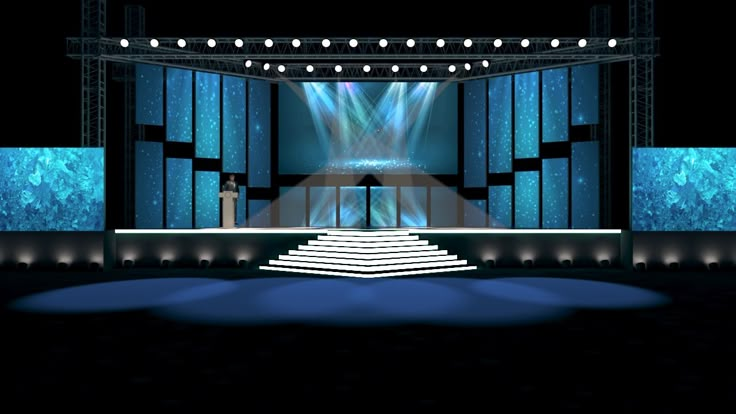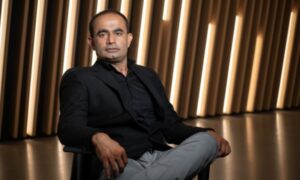In the context of theater, lighting is more than just a tool. It is an essential part of the audience’s experience. Lighting makes the storytelling better, sets the right mood, and aims the focus of the audience, making it one of the most significant components of every theatrical performance.
Lighting can help establish an atmosphere, draw attention to certain parts, and transform a plain stage into a splendid, breathtaking visual experience. Let us look at the importance of lighting in the theater and how it adds to the magic of live performances.
Why Lighting is Important in Theater
In a theater, lights are important for so much more than just shining a beam on a performer’s face. Lighting sets a precise mood, adjusts the viewers’ feelings, and showcases critical events of the performance. If the lighting is not right, everything from the performer’s expression, the set design, and the mood of the scene would be completely ignored. Lighting and performance are connected in a way that impacts the depth and the atmosphere of the performance. It helps to immerse the audience visually and emotionally.
Through lighting techniques, one can control time, space, as well as manipulate a particular mood. Additionally, it can indicate the tempo of a scene or the emotional transitions of a character, and even reflect the state of mind of the actors. Thus, light is one of the most important elements for achieving a well designed and interesting theatre performance.
Lighting Sets The Mood and Atmosphere
For instance, one of the lighting objectives in theatre is to set the mood and atmosphere for the scene in question. Light is capable of producing various feelings based on its direction, intensity as well and color. Warm colors like red and orange can invoke a sense of warmth, passion, or even danger, while cool colors like blue or green can tell a tale of mystery, sadness, or peace.
The strength of the illumination serves a crucial function as well. Soft light can suggest closeness or can be deeply disturbing, while bright lights create excitement and enthusiasm. Designers use lighting to deepen the audience’s emotional response to a scene so the audience has a stronger connection to the performance. This control of illumination seeks to enhance emotion, guiding the audience through the performance.
Using Lighting as a Storytelling Device
Lighting is not simply functional in a scene, but something that can advance the narrative. A change in lighting can suggest the passage of time, distance, or even a change in emotional undertone. For instance, lights being dimmed over time indicate that time is passing, while lights that suddenly increase in intensity can intensify the drama of the moment. The use of strobe lighting, or flashing effects, can suggest tension, chaos, or heightened activity. Conversely, softer and gradual transitions can aid in smoothing out changes between two different scenes.
Lighting can also assist in depicting the internal states of a character. A concentrated beam of bright light may suggest that a character is confident and sure of himself or herself. Dim lighting, or shadows, may, in contrast, suggest that there is fear or confusion. Such a combination of portraying emotions through lighting is powerful, as it adds a new dimension to the primary storyline.
Types of Theater Lighting Techniques
Theater lighting is incredibly sophisticated, and it plays a crucial part in guaranteeing a production’s success. Lighting methods are critical tools in the hands of a lighting designer, and they are relied upon to perform specific tasks and help sculpt the visual identity of a production. Below are some of the common techniques used in theater lighting:
- Front Lighting
As the name implies, front lighting is used to light the performer and the set from the front. Front lighting ensures that the audience can see the face and the actions of the actors as clearly as possible. It contributes to overall coverage and visibility of the intent behind the performance, and is mostly employed with aids to create a “look” that is well coordinated.
- Side Lighting
Side lighting is from the left and right sides of the stage and is frequently used to create angles and give character to the set. It casts shadows, thus underlining the depth of the performers and the setting of the scene. It also patterns motion and, in so doing, makes the performance more alive and interesting to watch.
- Backlighting
Backlighting is set behind the performers or the set, and it tends to create silhouettes and shapes. This technique has the power of adding drama or even mystery to a scene because it gives details to the performer or object being looked at and hides most of the characters. It works great in showcasing stunning moments visually.
- Spotlights
Throughout a performance, focus is needed in order for the audience to understand what is absolutely critical. Spotlights play an important role in focusing a beam of light on a specific performer or location on the stage. Spotlights are helpful to capture significant scenes or characters, making sure the audience does not miss moments that matter. By isolating key moments within the performance, Understanding is achieved.
- Gobo Lights
Gobo lights are very important in maintaining the texture and interest of the performance. Gobos are templates placed over lights that enable the projection of patterns or images on the stage. They add interest visually and set a given mood for the performance. Often, gobos are used to encapsulate trees or clouds as natural elements or even as abstract patterns to be added to the set.
- Color Gels
Color gels serve several essential functions in a performance. Being a colored filter, color gels are used to set the scene on the stage by enhancing the visual atmosphere or the emotional state of the scene. They include blue for calmness or sadness, and red for intensity and passion. Color gel filters dramatically aid in emphasizing the emotional tone of the scene.
The Duties of a Lighting Designer
As with most visual art works, lighting designers are the ones who ensure that all of these techniques merge into a single visual picture. They collaborate with the director, set designer, and other key staff members to ensure that all of them work in unison to meet the objectives of the production. The Lighting Designer selects the appropriate colors and intensities, schedules the timing of the lights, and ensures that lighting corresponds to the moods and emotional parts of the play.
Final Remark
Any performance has to have the aid of proper lighting, and theater production is no exception. It helps to capture attention, create a background to the scene, and reinforce the act itself. These few words cannot fully represent the skills and creativity of the designer who can effectively animate the stage’s surface in its versatile emotional profundity. Lighting expresses the atmosphere, the time of day, and the feelings of the characters. It is one of the elements of enchantment that make theater the bewitching form of art that it is. Whatever the case, lighting enhances the production in one way or another, and its importance is hard to underestimate.





























